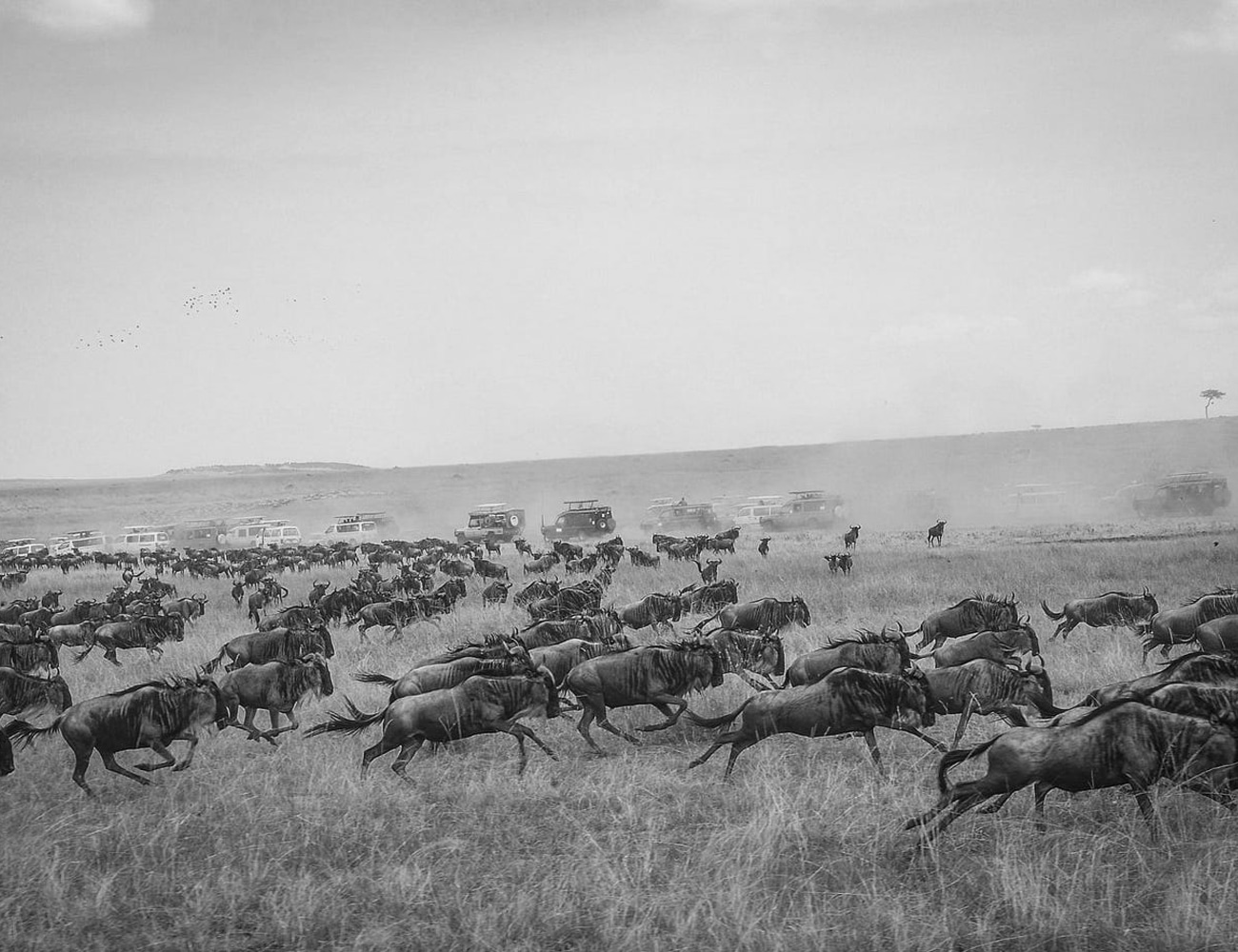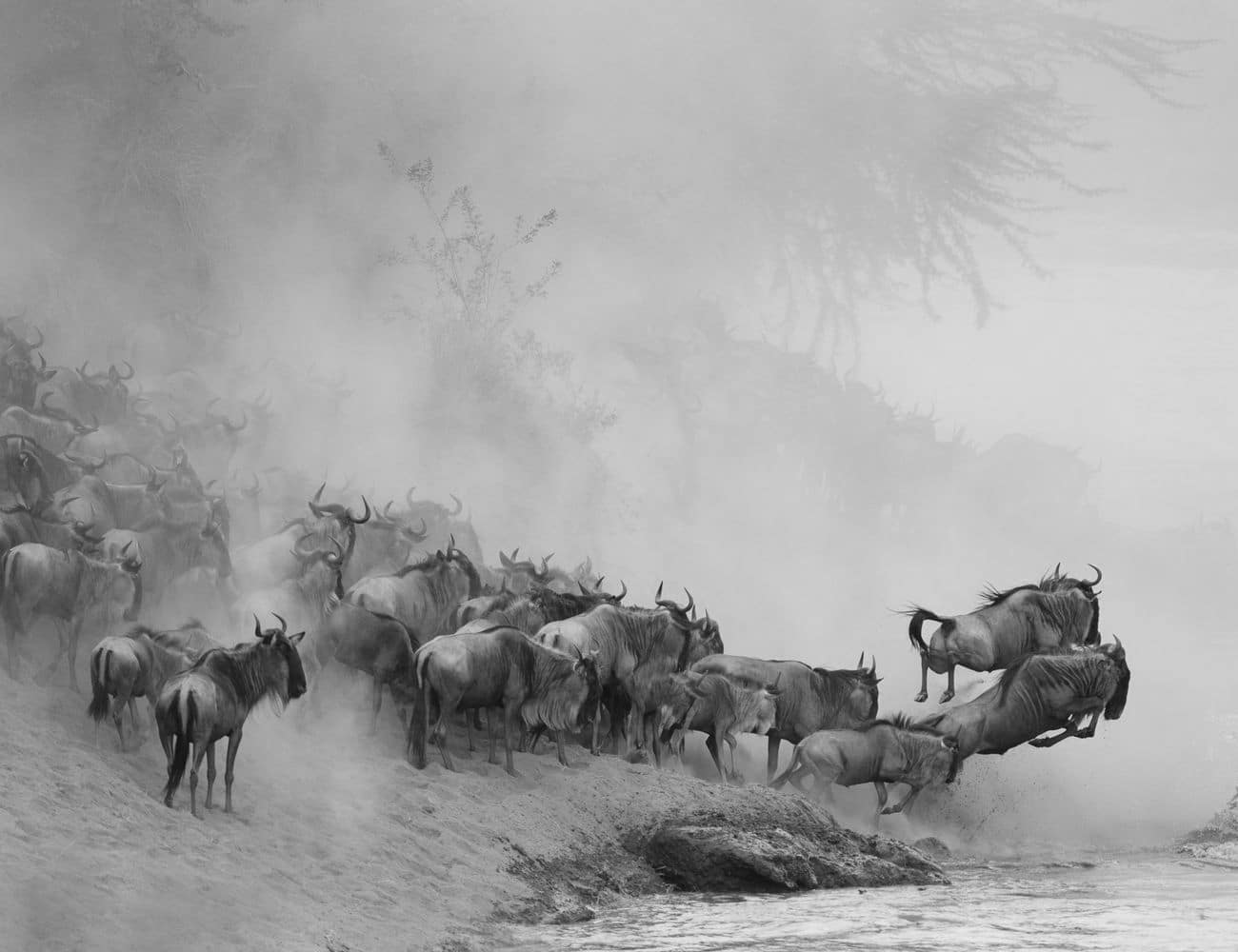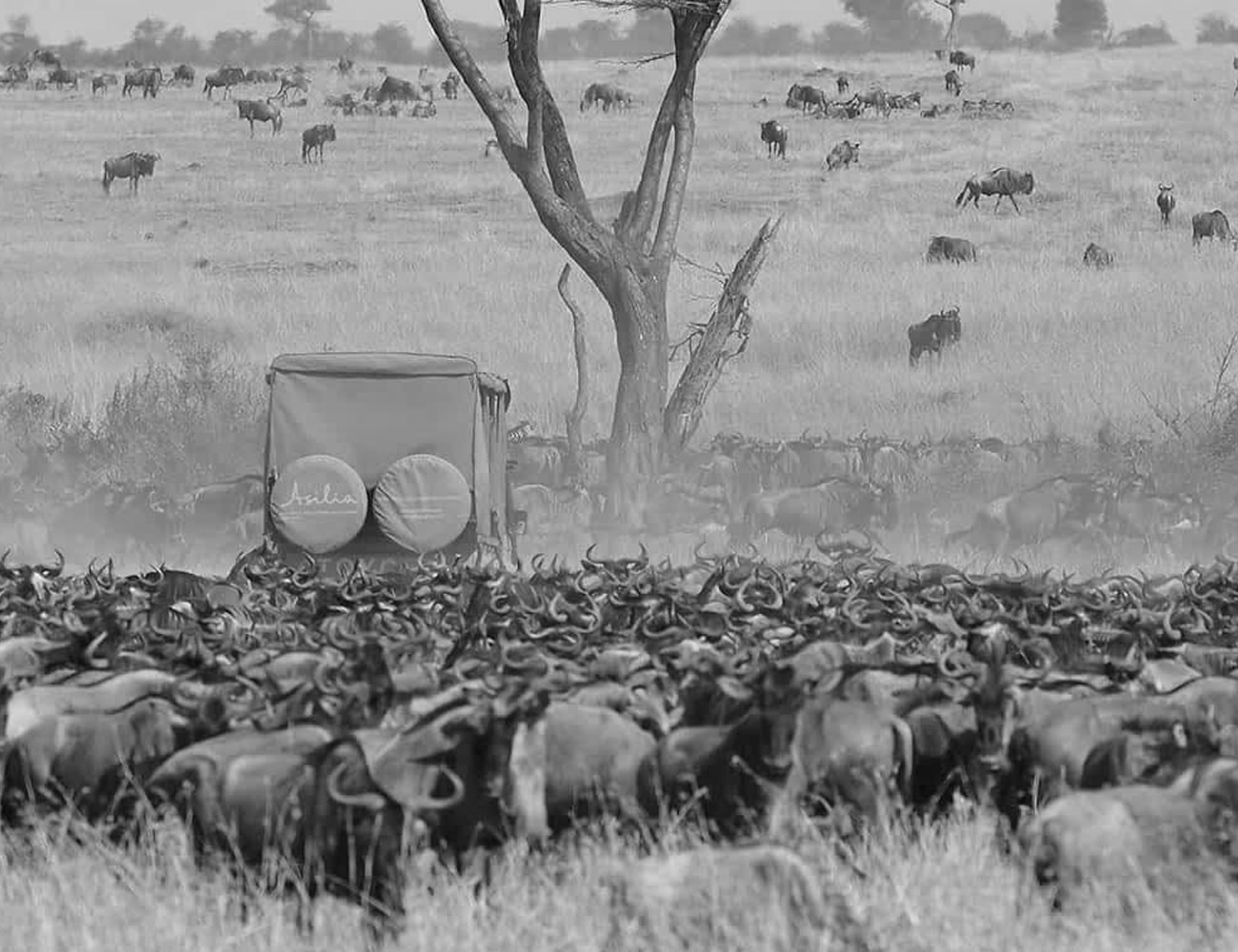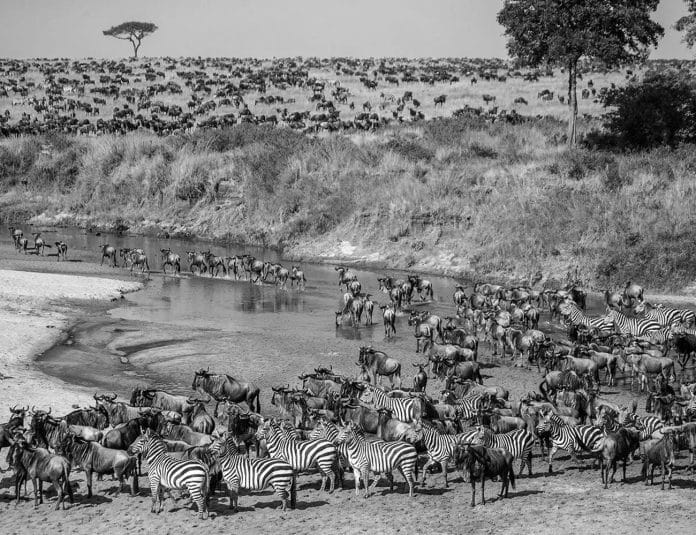Unveiling the Epic Journey: Exploring the Great Migration in Kenya and Tanzania
Embark on a remarkable expedition as we unveil the epic journey that is the Great Migration in Kenya and Tanzania. Witness one of the natural world’s most extraordinary spectacles as millions of wildebeest, zebras, and other wildlife traverse the vast plains in search of fresh grazing lands.
In this article, we will take you on a captivating journey through the stunning landscapes and diverse ecosystems of East Africa, where the drama of survival unfolds year after year. From the vast savannahs of the Masai Mara to the endless plains of the Serengeti, you will immerse yourself in a wildlife experience unlike any other.
Get ready to witness thrilling river crossings, as the magnificent herds navigate treacherous waters, evading crocodiles and other predators lurking beneath the surface. Along the way, marvel at the incredible sight of predators such as lions, cheetahs, and hyenas, who eagerly await this annual migratory feast.
Join us as we delve into the details of this awe-inspiring journey, providing you with insights into the best viewing spots, ideal seasons to visit, and tips for capturing stunning photographs. Get ready for an adventure that will leave you breathless and in awe of the wonders of nature.
The significance of the Great Migration

The great migration Kenya Tanzania is a phenomenon that captivates nature enthusiasts and wildlife lovers from around the world. It is not only a breathtaking spectacle but also plays a crucial role in the survival of numerous species. The migration is driven by the need for fresh grazing lands and water sources, as the herds follow the rhythm of the seasons. This incredible journey showcases the resilience and adaptability of wildlife in the face of ever-changing conditions. The Great Migration is not only a testament to the power of nature but also a reminder of the fragile balance that exists in our ecosystems.
When and where does the Great Migration occur?
The Great Migration takes place in East Africa, primarily in Kenya and Tanzania. The journey begins in the Serengeti in Tanzania, with wildebeest and zebras making their way north towards the Masai Mara in Kenya. The migration is a continuous cycle, with the herds following the rains and the availability of fresh grass. The exact timing of the migration can vary from year to year, but generally, it occurs between July and October. This is when the herds gather in large numbers to cross the Mara River, providing an incredible opportunity for wildlife enthusiasts to witness this dramatic event.
The wildlife in the Great Migration
The great wildebeest migration Tanzania and Kenya is not just about wildebeest and zebras. It is a diverse ecosystem that supports a wide range of wildlife. Alongside the herds, you will find predators such as lions, cheetahs, and hyenas, who capitalize on this annual feast. The migration also attracts a myriad of bird species, making it a paradise for birdwatchers. From elephants to giraffes, the great migration Kenya Tanzania offers a unique opportunity to witness the interaction between different species and the delicate balance that exists in the natural world.
The different stages of the Great Migration

The great migration Tanzania Kenya is a complex journey that unfolds in different stages. It begins with the calving season in the southern Serengeti, where millions of wildebeest give birth to their young. This period is characterized by an abundance of predators, as they take advantage of the vulnerable newborns. As the herds move north, they encounter various challenges, including river crossings and the threat of predators. The final stage of the migration is the return journey, as the herds make their way back to the Serengeti, completing the cycle.
Witnessing the Great Migration: Best viewing spots
To witness the Great Migration in all its glory, it is essential to choose the right viewing spots. The Masai Mara and the Serengeti are the most popular destinations, offering unparalleled opportunities to observe the migration up close. Within these national parks, there are specific areas known for their river crossings, such as the Mara River and the Grumeti River. These locations provide front-row seats to the thrilling spectacle of wildebeest and zebras braving the treacherous waters. Additionally, the Ngorongoro Crater offers a unique vantage point, allowing you to witness the migration from a different perspective.
Planning your trip to witness the Great Migration

Planning a trip to witness the Great Migration requires careful consideration of various factors. The timing of your visit is crucial, as different stages of the migration offer different experiences. If you want to witness the river crossings, it is recommended to visit between July and October. However, if you prefer a quieter time with fewer crowds, visiting during the shoulder seasons of June or November can be a good option. It is also important to consider the availability of accommodation, as the peak season can be busy. Booking in advance is advisable to secure your preferred lodging and ensure a seamless experience.
Accommodation options during the Great Migration
When it comes to accommodation during the Great Migration, you are spoilt for choice. From luxury lodges to tented camps, there are numerous options that cater to different preferences and budgets. Many lodges and camps are strategically located near the migration routes, offering convenient access to the action. These accommodations provide comfortable amenities, excellent food, and knowledgeable guides who will enhance your overall experience. Whether you prefer a rustic tented camp or a luxurious lodge, you can find the perfect place to call home during your Great Migration adventure.
Tips for capturing the best moments during the Great Migration
Capturing stunning photographs during the Great Migration requires careful planning and preparation. Here are some tips to help you make the most of your photography experience:
- Invest in a telephoto lens: A telephoto lens will allow you to capture close-up shots of the wildlife, even from a distance.
- Be patient and observant: Wildlife photography requires patience. Take the time to observe animal behavior and anticipate their movements.
- Use natural light to your advantage: The golden hours of sunrise and sunset offer the best lighting conditions for photography. Take advantage of these times to capture stunning images.
- Explore different perspectives: Experiment with different angles and compositions to create unique and captivating images.
- Respect the wildlife: Remember to always prioritize the well-being of the animals. Keep a safe distance and avoid disturbing their natural behavior.
By following these tips, you can capture the beauty and drama of the Great Migration in all its glory.
A once-in-a-lifetime experience
The Great Migration is an awe-inspiring journey that showcases the power and beauty of nature. It is a testament to the resilience and adaptability of wildlife, as they navigate challenging terrains and face formidable predators. Witnessing this incredible spectacle is a once-in-a-lifetime experience that will leave you in awe of the wonders of the natural world. From the captivating river crossings to the diverse wildlife encounters, the Great Migration offers a truly immersive wildlife experience. Embark on this extraordinary expedition and create memories that will last a lifetime.
For more articles related to Things to Do in Tanzania (Zanzibar), click here!
































